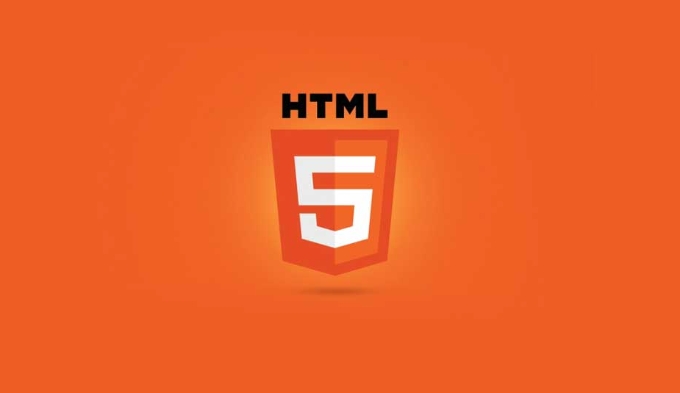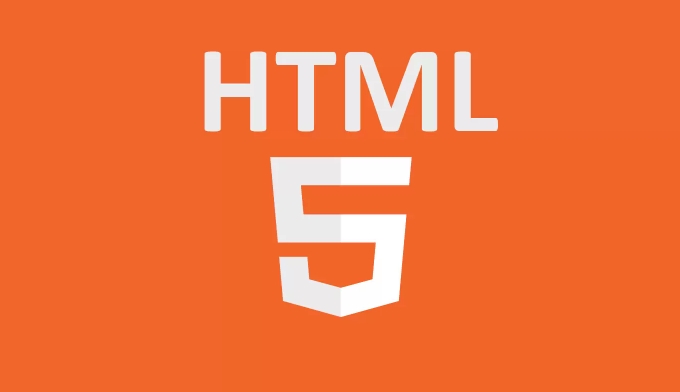Web Components is a set of browser-native standards used to create reusable, customizable HTML elements. 1. One of its core is Custom Elements, which allows developers to define new tags such as

Web Components is a very practical technology in modern front-end development. It allows us to create customized, reusable components with native HTML without relying on any framework. This is especially useful when building large projects or designing systems.

What are Web Components?
Simply put, Web Components is a set of browser-natively supported standards that allow you to create new HTML elements that can encapsulate their own structure, styles, and behaviors. One of the most core parts is "Custom Elements". You can define tags like <my-button></my-button> or <data-card></data-card> and make them specific.
How to define a custom element?
To create a custom element, it is mainly divided into two steps: define the class and register the element.

First, you need to create a class that inherits from HTMLElement . In this class, you can use constructor() to initialize the component, and usually create a Shadow DOM in combination with this.attachShadow({ mode: 'open' }) to implement style and structure encapsulation.
Then, after the class definition is complete, register your new element via customElements.define() method. for example:

class MyButton extends HTMLElement {
constructor() {
super();
this.attachShadow({ mode: 'open' });
this.shadowRoot.innerHTML = `
<button>Click Me</button>
<style>
button {
background-color: #4CAF50;
color: white;
padding: 10px;
}
</style>
`;
}
}
customElements.define('my-button', MyButton); Now you can use <my-button></my-button> directly in HTML, which will render a green button.
Lifecycle callback for custom elements
In addition to constructors, there are several commonly used life cycle hooks that can help you better control the behavior of components:
-
connectedCallback: Triggered when an element is added to the document, suitable for initialization operations. -
disconnectedCallback: fired when an element is removed from the document, suitable for cleaning up resources. -
attributeChangedCallback(attrName, oldVal, newVal): triggered when the specified attribute changes, it needs to be used withobservedAttributes. -
adoptedCallback: Called when the element is moved into a new document, this is not commonly used.
For example, if you want the component to change the content based on a certain property:
static get observedAttributes() {
return ['label'];
}
attributeChangedCallback(name, oldValue, newValue) {
if (name === 'label') {
this.shadowRoot.querySelector('button').textContent = newValue;
}
}Then in HTML:
<my-button label="Submit"></my-button>
Frequently Asked Questions and Precautions
- Naming specification : Custom element names must contain short horizontal lines (kebab-case), such as
<my-button></my-button>, which is to avoid conflicts with future native elements. - Compatibility : Web Components are supported by mainstream modern browsers, but they cannot run on older IE.
- Style Isolation : Using Shadow DOM can isolate styles very well, but if you want global styles to affect components, you may need to make some tweaks.
- Performance Optimization : Each custom element creates a new Shadow DOM, if used heavily, be careful to avoid unnecessary performance overhead.
Basically that's it. Mastering Custom Elements allows you to build components more flexibly without relying on any framework, which is worth learning.
The above is the detailed content of Introduction to Web Components with HTML (Custom Elements). For more information, please follow other related articles on the PHP Chinese website!

Hot AI Tools

Undress AI Tool
Undress images for free

Undresser.AI Undress
AI-powered app for creating realistic nude photos

AI Clothes Remover
Online AI tool for removing clothes from photos.

Clothoff.io
AI clothes remover

Video Face Swap
Swap faces in any video effortlessly with our completely free AI face swap tool!

Hot Article

Hot Tools

Notepad++7.3.1
Easy-to-use and free code editor

SublimeText3 Chinese version
Chinese version, very easy to use

Zend Studio 13.0.1
Powerful PHP integrated development environment

Dreamweaver CS6
Visual web development tools

SublimeText3 Mac version
God-level code editing software (SublimeText3)

Hot Topics
 Audio and Video: HTML5 VS Youtube Embedding
Jun 19, 2025 am 12:51 AM
Audio and Video: HTML5 VS Youtube Embedding
Jun 19, 2025 am 12:51 AM
HTML5isbetterforcontrolandcustomization,whileYouTubeisbetterforeaseandperformance.1)HTML5allowsfortailoreduserexperiencesbutrequiresmanagingcodecsandcompatibility.2)YouTubeofferssimpleembeddingwithoptimizedperformancebutlimitscontroloverappearanceand
 What is the purpose of the input type='range'?
Jun 23, 2025 am 12:17 AM
What is the purpose of the input type='range'?
Jun 23, 2025 am 12:17 AM
inputtype="range" is used to create a slider control, allowing the user to select a value from a predefined range. 1. It is mainly suitable for scenes where values ??need to be selected intuitively, such as adjusting volume, brightness or scoring systems; 2. The basic structure includes min, max and step attributes, which set the minimum value, maximum value and step size respectively; 3. This value can be obtained and used in real time through JavaScript to improve the interactive experience; 4. It is recommended to display the current value and pay attention to accessibility and browser compatibility issues when using it.
 Adding drag and drop functionality using the HTML5 Drag and Drop API.
Jul 05, 2025 am 02:43 AM
Adding drag and drop functionality using the HTML5 Drag and Drop API.
Jul 05, 2025 am 02:43 AM
The way to add drag and drop functionality to a web page is to use HTML5's DragandDrop API, which is natively supported without additional libraries. The specific steps are as follows: 1. Set the element draggable="true" to enable drag; 2. Listen to dragstart, dragover, drop and dragend events; 3. Set data in dragstart, block default behavior in dragover, and handle logic in drop. In addition, element movement can be achieved through appendChild and file upload can be achieved through e.dataTransfer.files. Note: preventDefault must be called
 How can you animate an SVG with CSS?
Jun 30, 2025 am 02:06 AM
How can you animate an SVG with CSS?
Jun 30, 2025 am 02:06 AM
AnimatingSVGwithCSSispossibleusingkeyframesforbasicanimationsandtransitionsforinteractiveeffects.1.Use@keyframestodefineanimationstagesforpropertieslikescale,opacity,andcolor.2.ApplytheanimationtoSVGelementssuchas,,orviaCSSclasses.3.Forhoverorstate-b
 HTML audio and video: Examples
Jun 19, 2025 am 12:54 AM
HTML audio and video: Examples
Jun 19, 2025 am 12:54 AM
Audio and video elements in HTML can improve the dynamics and user experience of web pages. 1. Embed audio files using elements and realize automatic and loop playback of background music through autoplay and loop properties. 2. Use elements to embed video files, set width and height and controls properties, and provide multiple formats to ensure browser compatibility.
 What is WebRTC and what are its main use cases?
Jun 24, 2025 am 12:47 AM
What is WebRTC and what are its main use cases?
Jun 24, 2025 am 12:47 AM
WebRTC is a free, open source technology that supports real-time communication between browsers and devices. It realizes audio and video capture, encoding and point-to-point transmission through built-in API, without plug-ins. Its working principle includes: 1. The browser captures audio and video input; 2. The data is encoded and transmitted directly to another browser through a security protocol; 3. The signaling server assists in the initial connection but does not participate in media transmission; 4. The connection is established to achieve low-latency direct communication. The main application scenarios are: 1. Video conferencing (such as GoogleMeet, Jitsi); 2. Customer service voice/video chat; 3. Online games and collaborative applications; 4. IoT and real-time monitoring. Its advantages are cross-platform compatibility, no download required, default encryption and low latency, suitable for point-to-point communication
 How to create animations on a canvas using requestAnimationFrame()?
Jun 22, 2025 am 12:52 AM
How to create animations on a canvas using requestAnimationFrame()?
Jun 22, 2025 am 12:52 AM
The key to using requestAnimationFrame() to achieve smooth animation on HTMLCanvas is to understand its operating mechanism and cooperate with Canvas' drawing process. 1. requestAnimationFrame() is an API designed for animation by the browser. It can be synchronized with the screen refresh rate, avoid lag or tear, and is more efficient than setTimeout or setInterval; 2. The animation infrastructure includes preparing canvas elements, obtaining context, and defining the main loop function animate(), where the canvas is cleared and the next frame is requested for continuous redrawing; 3. To achieve dynamic effects, state variables, such as the coordinates of small balls, are updated in each frame, thereby forming
 How to check if a browser can play a specific video format?
Jun 28, 2025 am 02:06 AM
How to check if a browser can play a specific video format?
Jun 28, 2025 am 02:06 AM
To confirm whether the browser can play a specific video format, you can follow the following steps: 1. Check the browser's official documents or CanIuse website to understand the supported formats, such as Chrome supports MP4, WebM, etc., Safari mainly supports MP4; 2. Use HTML5 tag local test to load the video file to see if it can play normally; 3. Upload files with online tools such as VideoJSTechInsights or BrowserStackLive for cross-platform detection. When testing, you need to pay attention to the impact of the encoded version, and you cannot rely solely on the file suffix name to judge compatibility.






